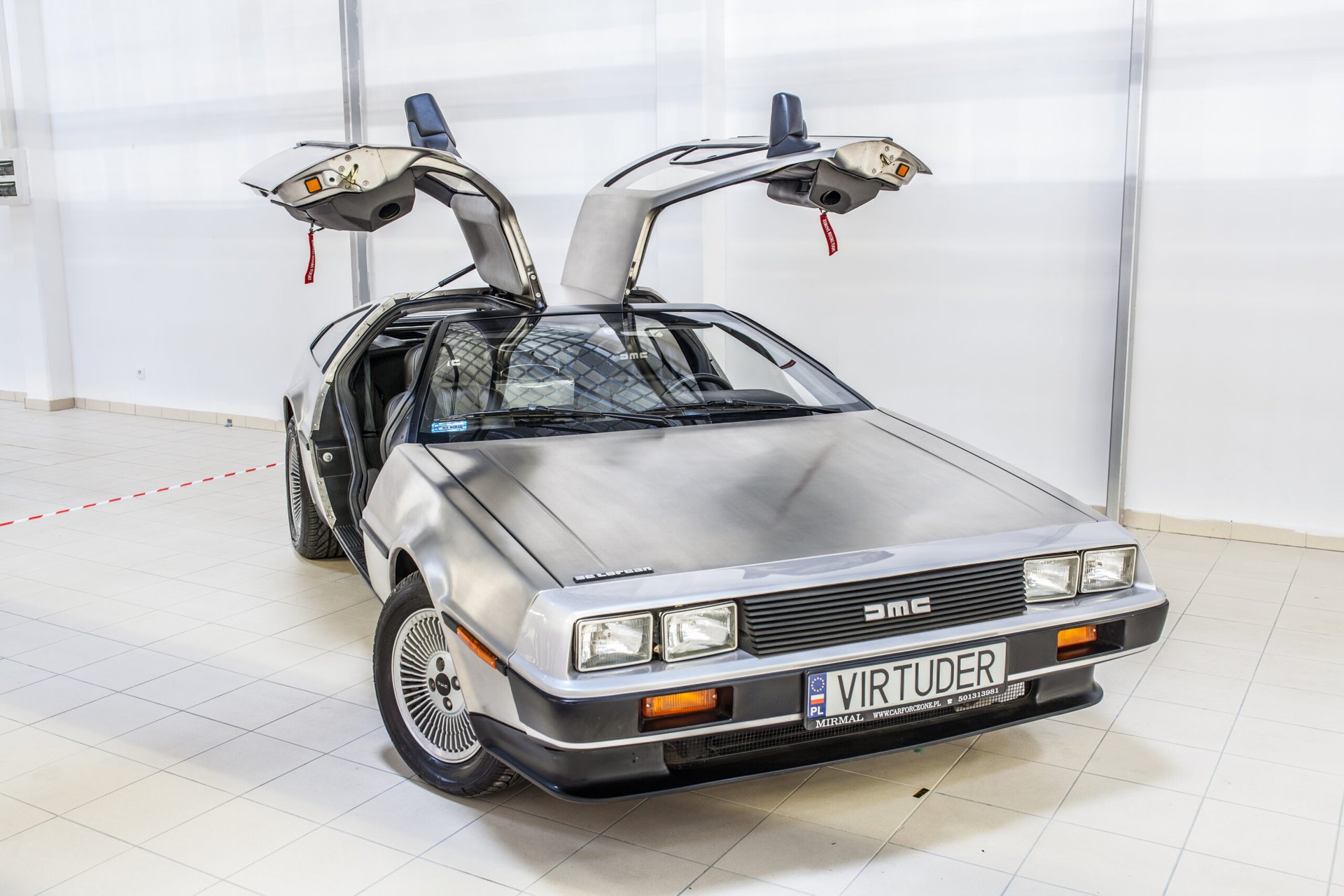
The future is today, and it’s about time!
At least, that’s what those celebrating “Back to the Future Day” say.
In the second installment of the popular trilogy, 1989’s “Back to the Future Part II” characters Marty McFly (Michael J. Fox) and Doc Brown (Christopher Lloyd) land their time traveling DeLorean in what is now our present day, Oct. 21, 2015.
Through their eyes, we see the future envisioned by producer Steven Spielberg and director Robert Zemeckis. Through our eyes we can see how close they got — and in some cases, what we got instead.
Time travel
No, we still don’t have time machines, and we don’t even have scientists agreeing on whether we could time travel, but that doesn’t mean we stopped experimenting with the possibility, as Space.com reports. Researchers at the University of Queensland in Australia recently simulated how time-traveling photons might behave, the Daily Mail reported. Their research suggests that if we ever could travel back through time, we could deal with the grandfather paradox cited in “Back to the Future”: If we stop our grandparents from meeting, we wouldn’t be born to travel back in time.
Flying cars
Weren’t we supposed to have flying cars by now? They haven’t really gotten off the ground yet. Envisioned long before “Back to the Future,” they were featured in movies, including “A Visit to A Small Planet” with Jerry Lewis and television’s “The Jetsons.” Boston-based Terrafugia says its model is coming soon, and you can reserve one now. It’s even making a vertical takeoff model, it told the BBC, that would be ready in less than 10 years.
In the meantime, as the BBC notes, we’ve got electric cars and garbage-fueled cars. And don’t forget self-driving cars, they’re here, thanks to Mercedes, Google and Apple.
Picture phones
As movie character Needles (Flea) talks in a video phone call, on-screen text lets a middle-age McFly see his caller’s personal likes and dislikes. We’ve got Skype and other video conferencing tools. Personal details don’t flow automatically yet, but during a Skype call, we could call up or search for details about people with whom we’re talking. Also, we’ve got FaceTime on iPhones, putting live video chats in the palms of our hands.
Fax machines seem ubiquitous in the movie, but their use in our real lives has diminished with the growth of email, PDFs and JPEGs.
Flat screens
Not only does the movie showcase flat screen TVs, they appear to be at the 16:9 aspect ratio we enjoy now on high-definition sets rather than the 4:3 ratio that was still standard in 1989. While the plasma flat screen was invented in 1964, HDTVs did not become common until the late ’90s. Digital TV transmission became mandatory in 2009. The movie also showed flexible screens the size of window shades. Flex screens exist in smaller formats and are in development for larger sizes.
Thumbprints
In 2015, according to the film, thumbprints open door locks and pay bills, such as a taxi fare. That does happen now, at least to a degree. You can buy keyless “biometric” locks activated by your thumbprint or fingerprint, as well as by keypad and card reader. If you’ve got an iPhone, you can activate it with your thumbprint and in turn activate apps that unlock doors or pay bills via PayPal or your credit and debit cards. Yale locks recently partnered with Nest, the Google-owned technology firm, to sell a door lock that can be remotely controlled by a smartphone app.
Video glasses
The McFly children of 2015 wear video glasses to watch entertainment and receive phone calls. Voice-activated Google Glass came – with parts of a smartphone, a processor, 16GB of storage, a Bluetooth radio, a small battery and more – but earlier this year went, when Google halted consumer sales of its $1,500 eyewear. Google reportedly will revive Glass under a new name.
Meanwhile, Facebook’s Oculus Rift and Microsoft’s HoloLens virtual reality headgear are due early next year.
And we’ve got other wearable devices foretold by a talking jacket worn by McFly, from the Apple Watch and FitBits to clothing that monitors your heart rate, respiration rate and skin temperature and can even send EKGs (electrocardiograms). Nike has applied for a patent for self-lacing footwear.

Holograms
We don’t have a holographic version of “Jaws 19,” but you can attend your own funeral and hang out for eternity as a hologram. Full-color, pop-up, floating 3D displays that can be viewed without glasses, are coming.
Hoverboard
While the movie features a chase scene on hoverboards, that wouldn’t work now for real. Hoverboards designed by Lexus and a rival called Hendo, designed with skateboard star Tony Hawk, work on magnet-based technology and can’t leave their metal tracks hidden below skatepark surfaces.
A few movie misses
- The Web: Although the film depicts data-driven technology, and the Internet was around when the film was made, the World Wide Web was in its infancy.
- Smartphones: “It’s the Swiss Army Knife of today,” screenwriter Bob Gale told The Hollywood Reporter. “The fact that everyone can have one device that’s a computer, that’s a camera, that’s a recording device, that’s a calculator, that’s a flashlight … we didn’t think of that.” Marty Jr. uses an AT&T payphone in the movie. The film does show, however, tabletlike devices. However, it also relies on a print version of USA Today to change as the film’s characters change history. And who could foresee the USA Today logo change?
- Pizza hydrators: Black & Decker never did develop the kitchen gadget that would blow up a miniature pizza to full size. However, Gale did foresee pizza remaining popular.
How to celebrate
- See it again: If you have Amazon Prime, you can watch all three “Back to the Future” movies for free in October. Universal also recently released a 30th anniversary Blu-ray set (the first movie came out in 1985). Go back to the big screen as the movies are playing in many cities.
- Go behind the scenes: The documentary film “Back in Time,” featuring interviews with Fox, Zemeckis and Spielberg, will be released digitally Oct. 21.
- Keep up: Check out updates for Doctor Brown on Facebook, where he seems to have returned to 2015.
- Visit: If you’re near Reston, Virginia, a Washington, D.C., suburb, you can visit Marty McFly’s hometown of Hill Valley, thanks to the Washington West International Film Festival. It will be screening “Back to the Future Part II” with actor Lloyd and screenwriter Gale in attendance.
- Watch the Cubs, even though they are facing off against the Mets on Oct. 21. In the movie, they beat a not-then-real Miami team to win the 2015 World Series.
Which “Back to the Future” prediction do you wish had come true? Share with us in comments below or on our Facebook page.




Add a Comment
Our Policy: We welcome relevant and respectful comments in order to foster healthy and informative discussions. All other comments may be removed. Comments with links are automatically held for moderation.